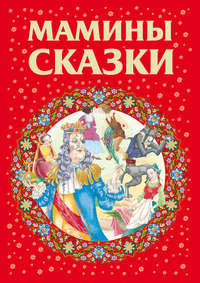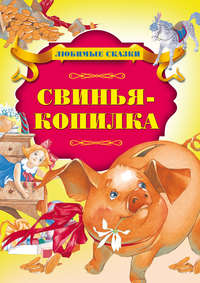 полная версия
полная версияPictures of Sweden
We cast another glance over Venern, to Lockö's old palace, to the town of Lendkjobing, and are again near verdant fields and noble trees, that cast their shadows over Blomberg, where, in the garden, the poet Geier's spirit seeks the flower of Kinnakulla in his grand-daughter, little Anna.
The plain expands here behind Kinnakulla; it extends for miles around, towards the horizon. A shower stands in the heavens; the wind has increased: see how the rain falls to the ground like a darkening veil. The branches of the trees lash one another like penitential dryades. Old Husaby church lies near us, yonder; though the shower lashes the high walls, which alone stand, of the old Catholic Bishop's palace. Crows and ravens fly through the long glass-less windows, which time has made larger; the rain pours down the crevices in the old grey walls, as if they were now to be loosened stone from stone: but the church stands—old Husaby church—so grey and venerable, with its thick walls, its small windows, and its three spires stuck against each other, and standing, like nuts, in a cluster.
The old trees in the churchyard cast their shade over ancient graves. Where is the district's "Old Mortality," who weeds the grass, and explains the ancient memorials? Large granite stones are laid here in the form of coffins, ornamented with rude carvings from the times of Catholicism. The old church-door creaks in the hinges. We stand within its walls, where the vaulted roof was filled for centuries with the fragrance of incense, with monks, and with the song of the choristers. Now it is still and mute here: the old men in their monastic dresses have passed into their graves; the blooming boys that swung the censer are in their graves; the congregation—many generations—all in their graves; but the church still stands the same. The moth-eaten, dusty cowls, and the bishops' mantle, from the days of the cloister, hang in the old oak presses; and old manuscripts, half eaten up by the rats, lie strewed about on the shelves in the sacristy.
In the left aisle of the church there still stands, and has stood time out of mind, a carved image of wood, painted in various colours which are still strong: it is the Virgin Mary with the child Jesus. Fresh flower wreaths are hung around hers and the child's head; fragrant garlands are twined around the pedestal, as festive as on Madonna's birthday feast in the times of Popery. The young folks who have been confirmed, have this day, on receiving the sacrament for the first time, ornamented this old image—nay, even set the priest's name in flowers upon the altar; and he has, to our astonishment, let it remain there.
The image of Madonna seems to have become young by the fresh wreaths: the fragrant flowers here have a power like that of poetry—they bring back the days of past centuries to our own times. It is as if the extinguished glory around the head shone again; the flowers exhale perfume: it is as if incense again streamed through the aisles of the church—it shines around the altar as if the consecrated tapers were lighted—it is a sunbeam through the window.
The sky without has become clear: we drive again in under Cleven, the barren side of Kinnakulla: it is a rocky wall, different from almost all the others. The red stone blocks lie, strata on strata, forming fortifications with embrasures, projecting wings and round towers; but shaken, split and fallen in ruins—it is an architectural fantastic freak of nature. A brook falls gushing down from one of the highest points of the Cleven, and drives a little mill. It looks like a plaything which the mountain sprite had placed there and forgotten.
Large masses of fallen stone blocks lie dispersed round about; nature has spread them in the forms of carved cornices. The most significant way of describing Kinnakulla's rocky wall is to call it the ruins of a mile-long Hindostanee temple: these rocks might be easily transformed by the hammer into sacred places like the Ghaut mountains at Ellara. If a Brahmin were to come to Kinnakulla's rocky wall, he would recognise the temple of Cailasa, and find in the clefts and crevices whole representations from Ramagena and Mahabharata. If one should then speak to him in a sort of gibberish—no matter what, only that, by the help of Brockhaus's "Conversation-Lexicon" one might mingle therein the names of some of the Indian spectacles:—Sakantala, Vikramerivati, Uttaram Ramatscheritram, &c.—the Brahmin would be completely mystified, and write in his note-book: "Kinnakulla is the remains of a temple, like those we have in Ellara; and the inhabitants themselves know the most considerable works in our oldest Sanscrit literature, and speak in an extremely spiritual manner about them." But no Brahmin comes to the high rocky walls—not to speak of the company from the steam-boat, who are already far over the lake Venern. They have seen wood-crowned Kinnakulla, Sweden's hanging gardens—and we also have now seen them.
GRANDMOTHER
Grandmother is so old, she has so many wrinkles, and her hair is quite white; but her eyes! they shine like two stars, nay, they are much finer—they are so mild, so blissful to look into. And then she knows the most amusing stories, and she has a gown with large, large flowers on it, and it is of such thick silk that it actually rustles. Grandmother knows so much, for she has lived long before father and mother—that is quite sure.
Grandmother has a psalm-book with thick silver clasps, and in that book she often reads. In the middle of it lies a rose, which is quite flat and dry; but it is not so pretty as the roses she has in the glass, yet she smiles the kindliest to it, nay, even tears come into her eyes!
Why does Grandmother look thus on the withered flower in the old book? Do you know why?
Every time that Grandmother's tears fall on the withered flower the colours become fresher; the rose then swells and the whole room is filled with fragrance; the walls sink as if they were but mists; and round about, it is the green, the delightful grove, where the sun shines between the leaves. And Grandmother—yes, she is quite young; she is a beautiful girl, with yellow hair, with round red cheeks, pretty and charming—no rose is fresher. Yet the eyes, the mild, blissful eyes,—yes, they are still Grandmother's! By her side sits a man, young and strong: he presents the rose to her and she smiles. Yet grandmother does not smile so,—yes; the smile comes,—he is gone.—Many thoughts and many forms go past! That handsome man is gone; the rose lies in the psalm-book, and grandmother,—yes, she again sits like an old woman, and looks on the withered rose that lies in the book.
Now grandmother is dead!
She sat in the arm-chair, and told a long, long, sweet story. "And now it is ended!" said she, "and I am quite tired: let me now sleep a little!" And so she laid her head back to rest. She drew her breath, she slept, but it became more and more still; and her face was so full of peace and happiness—it was as if the sun's rays passed over it. She smiled, and then they said that she was dead.
She was laid in the black coffin; she lay swathed in the white linen: she was so pretty, and yet the eyes were closed—but all the wrinkles were gone. She lay with a smile around her mouth: her hair was so silvery white, so venerable, one was not at all afraid to look on the dead, for it was the sweet, benign grandmother. And the psalm-book was laid in the coffin under her head (she herself had requested it), and the rose lay in the old book—and then they buried grandmother.
On the grave, close under the church-wall, they planted a rose-tree, and it became full of roses, and the nightingale sang over it, and the organ in the church played the finest psalms that were in the book under the dead one's head. And the moon shone straight down on the grave—but the dead was not there: every child could go quietly in the night-time and pluck a rose there by the churchyard-wall. The dead know more than all we living know—the dead know the awe we should feel at something so strange as their coming to us. The dead are better than us all, and therefore they do not come.
There is earth over the coffin, there is earth within it; the psalm-book with its leaves is dust the rose with all its recollections has gone to dust. But above it bloom new roses, above is sings the nightingale, and the organ plays:—we think of the old grandmother with the mild, eternally young eyes. Eyes can never die! Ours shall once again see her young, and beautiful, as when she for the first time kissed the fresh red rose which is now dust in the grave.
THE PRISON-CELLS
By separation from other men, by solitary confinement, in continual silence, the criminal is to be punished and amended; therefore were prison-cells contrived. In Sweden there were several, and new ones have been built. I visited one for the first time in Mariestad. This building lies close outside the town, by a running water, and in a beautiful landscape. It resembles a large white-washed summer residence, window above window.
But we soon discover that the stillness of the grave rests over it. It is as if no one dwelt here, or like a deserted mansion in the time of the plague. The gates in the walls are locked: one of them is opened for us: the gaoler stands with his bunch of keys: the yard is empty, but clean—even the grass weeded away between the stone paving. We enter the waiting-room, where the prisoner is received: we are shown the bathing-room, into which he is first led. We now ascend a flight of stairs, and are in a large hall, extending the whole length and breadth of the building. Galleries run along the floors, and between these the priest has his pulpit, where he preaches on Sundays to an invisible congregation. All the doors facing the gallery are half opened: the prisoners hear the priest, but cannot see him, nor he them. The whole is a well-built machine—a nightmare for the spirit. In the door of every cell there is fixed a glass, about the size of the eye: a slide covers it, and the gaoler can, unobserved by the prisoner, see everything he does; but he must come gently, noiselessly, for the prisoner's ear is wonderfully quickened by solitude. I turned the slide quite softly, and looked into the closed space, when the prisoner's eye immediately met mine. It is airy, clean, and light within the cell, but the window is placed so high that it is impossible to look out of it. A high stool, made fast to a sort of table, and a hammock, which can be hung upon hooks under the ceiling, and covered with a quilt, compose the whole furniture.
Several cells were opened for us. In one of these was a young, and extremely pretty girl. She had lain down in her hammock, but sprang out directly the door was opened, and her first employment was to lift her hammock down, and roll it together. On the little table stood a pitcher with water, and by it lay the remains of some oatmeal cakes, besides the Bible and some psalms.
In the cell close by sat a child's murderess. I saw her only through the little glass in the door. She had had heard our footsteps; heard us speak; but she sat still, squeezed up into the corner by the door, as if she would hide herself as much as possible: her back was bent, her head almost on a level with her lap, and her hands folded over it. They said this unfortunate creature was very young. Two brothers sat here in two different cells: they were punished for horse stealing; the one was still quite a boy.
In one cell was a poor servant girl. They said: "She has no place of resort, and without a situation, and therefore she is placed here." I thought I had not heard rightly, and repeated my question, "why she was here," but got the same answer. Still I would rather believe that I had misunderstood what was said—it would otherwise be abominable.
Outside, in the free sunshine, it is the busy day; in here it is always midnight's stillness. The spider that weaves its web down the wall, the swallow which perhaps flies a single time close under the panes there high up in the wall—even the stranger's footstep in the gallery, as he passes the cell-doors, is an event in that mute, solitary life, where the prisoners' thoughts are wrapped up in themselves. One must read of the martyr-filled prisons of the Inquisition, of the crowds chained together in the Bagnes, of the hot, lead chambers of Venice, and the black, wet gulf of the wells—be thoroughly shaken by these pictures of misery, that we may with a quieter pulsation of the heart wander through the gallery of the prison-cells. Here is light, here is air;—here it is more humane. Where the sunbeam shines mildly in on the prisoner, there also will the radiance of God shine into the heart.
BEGGAR-BOYS
The painter Callot—who does not know the name, at least from Hoffmann's "in Callot's manner?"—has given a few excellent pictures of Italian beggars. One of these is a fellow, on whom the one rag lashes the other: he carries his huge bundle and a large flag with the inscription, "Capitano de Baroni." One does not think that there can in reality be found such a wandering rag-shop, and we confess that in Italy itself we have not seen any such; for the beggar-boy there, whose whole clothing often consists only of a waistcoat, has in it not sufficient costume for such rags.
But we see it in the North. By the canal road between the Venern and Vigen, on the bare, dry rocky plain there stood, like beauty's thistles in that poor landscape, a couple of beggar-boys, so ragged, so tattered, so picturesquely dirty, that we thought we had Callot's originals before us, or that it was an arrangement of some industrious parents, who would awaken the traveller's attention and benevolence. Nature does not form such things: there was something so bold in the hanging on of the rags, that each boy instantly became a Capitano de Baroni.
The younger of the two had something round him that had certainly once been the jacket of a very corpulent man, for it reached almost to the boy's ancles; the whole hung fast by a piece of the sleeve and a single brace, made from the seam of what was now the rest of the lining. It was very difficult to see the transition from jacket to trowsers, the rags glided so into one another. The whole clothing was arranged so as to give him an air-bath: there were draught holes on all sides and ends; a yellow linen clout fastened to the nethermost regions seemed as if it were to signify a shirt. A very large straw hat, that had certainly been driven over several times, was stuck sideways on his head, and allowed the boy's wiry, flaxen hair to grow freely through the opening where the crown should have been: the naked brown shoulder and upper part of the arm, which was just as brown, were the prettiest of the whole.
The other boy had only a pair of trowsers on. They were also ragged, but the rags were bound fast into the pockets with packthread; one string round the ancles, one under the knee, and another round about the waist. He, however, kept together what he had, and that is always respectable.
"Be off!" shouted the Captain, from the vessel; and the boy with the tied-up rags turned round, and we—yes, we saw nothing but packthread, in bows, genteel bows. The front part of the boy only was covered: he had only the foreparts of trowsers—the rest was packthread, the bare, naked packthread.
VADSTENE
In Sweden, it is not only in the country, but even in several of the provincial towns, that one sees whole houses of grass turf or with roofs of grass turf; and some are so low that one might easily spring up to the roof, and sit on the fresh greensward. In the early spring, whilst the fields are still covered with snow, but which is melted on the roof, the latter affords the first announcement of spring, with the young sprouting grass where the sparrow twitters: "Spring comes!"
Between Motala and Vadstene, close by the high road, stands a grass-turf house—one of the most picturesque. It has but one window, broader than it is high, and a wild rose branch forms the curtain outside.
We see it in the spring. The roof is so delightfully fresh with grass, it has quite the tint of velvet; and close to it is the chimney, nay, even a cherry-tree grows out of its side, now full of flowers: the wind shakes the leaves down on a little lamb that is tethered to the chimney. It is the only lamb of the family. The old dame who lives here, lifts it up to its place herself in the morning and lifts it down again in the evening, to give it a place in the room. The roof can just bear the little lamb, but not more—this is an experience and a certainty. Last autumn—and at that time the grass turf roofs are covered with flowers, mostly blue and yellow, the Swedish colours—there grew here a flower of a rare kind. It shone in the eyes of the old Professor, who on his botanical tour came past here. The Professor was quickly up on the roof, and just as quick was one of his booted legs through it, and so was the other leg, and then half of the Professor himself—that part where the head does not sit; and as the house had no ceiling, his legs hovered right over the old dame's head, and that in very close contact. But now the roof is again whole; the fresh grass grows where learning sank; the little lamb bleats up there, and the old dame stands beneath, in the low doorway, with folded hands, with a smile on her mouth, rich in remembrances, legends and songs, rich in her only lamb on which the cherry-tree strews its flower-blossoms in the warm spring sun.
As a background to this picture lies the Vettern—the bottomless lake as the commonalty believe—with its transparent water, its sea-like waves, and in calm, with "Hegring," or fata morgana on its steel-like surface. We see Vadstene palace and town, "the city of the dead," as a Swedish author has called it—Sweden's Herculaneum, reminiscence's city. The grass-turf house must be our box, whence we see the rich mementos pass before us—memorials from the chronicle of saints, the chronicle of kings and the love songs that still live with the old dame, who stands in her low house there, where the lamb crops the grass on the roof. We hear her, and we see with her eyes; we go from the grass-turf house up to the town, to the other grass-turf houses, where poor women sit and make lace, once the celebrated work of the rich nuns here in the cloister's wealthy time.
How still, solitary and grass-grown are these streets! We stop by an old wall, mouldy-green for centuries already. Within it stood the cloister; now there is but one of its wings remaining. There, within that now poor garden still bloom Saint Bridget's leek, and once ran flowers. King John and the Abbess, Ana Gylte, wandered one evening there, and the King cunningly asked: "If the maidens in the cloister were never tempted by love?" and the Abbess answered, as she pointed to a bird that just then flew over them: "It may happen! One cannot prevent the bird from flying over the garden; but one may surely prevent it from building its nest there!"
Thus thought the pious Abbess, and there have been sisters who thought and acted like her. But it is quite as sure that in the same garden there stood a pear-tree, called the tree of death; and the legend says of it, that whoever approached and plucked its fruit would soon die. Red and yellow pears weighed down its branches to the ground. The trunk was unusually large; the grass grew high around it, and many a morning hour was it seen trodden down. Who had been here during the night?
A storm arose one evening from the lake, and the next morning the large tree was found thrown down; the trunk was broken, and out from it there rolled infants' bones—the white bones of murdered children lay shining in the grass.
The pious but love-sick sister Ingrid, this Vadstene's Heloise, writes to her heart's beloved, Axel Nilsun—for the chronicles have preserved it for us:—
"Broderne og Systarne leka paa Spil, drikke Vin och dansa med hvarandra i Tradgården!"
(The brothers and sisters amuse themselves in play, drink wine and dance with one another in the garden).
These words may explain to us the history of the pear-tree: one is led to think of the orgies of the nun-phantoms in "Robert le Diable," the daughters of sin on consecrated ground. But "judge not, lest ye be judged," said the purest and best of men that was born of woman. We will read Sister Ingrid's letter, sent secretly to him she truly loved. In it lies the history of many, clear and human to us:—
"Jag djerfues for ingen utan for dig allena bekänna, att jag formår ilia ånda mit Ave Maria eller läsa mit Paternoster, utan du kommer mig ichågen. Ja i sjelfa messen kommer mig fore dit täckleliga Ansigte och vart kårliga omgange. Jag tycker jag kan icke skifta mig for n genann an Menniska, jungfru Maria, St. Birgitta och himmelens Härskaror skalla kanske straffe mig hårfar? Men du vet det val, hjertans käraste att jag med fri vilja och uppsät aldrig dissa reglar samtykt. Mine foräldrer hafva väl min kropp i dette fangelset insatt, men hjertät kan intet så snart från verlden ater kalles!"
(I dare not confess to any other than to thee, that I am not able to repeat my Ave Maria or read my Paternoster, without calling thee to mind. Nay, even in the mass itself thy comely face appears, and our affectionate intercourse recurs to me. It seems to me that I cannot confess to any other human being—the Virgin Mary, St. Bridget, and the whole host of heaven will perhaps punish me for it. But thou knowest well, my heart's beloved, that I have never consented with my free-will to these rules. My parents, it is true, have placed my body in this prison, but the heart cannot so soon be weaned from the world).
How touching is the distress of young hearts! It offers itself to us from the mouldy parchment, it resounds in old songs. Beg the grey-haired old dame in the grass turf-house to sing to thee of the young, heavy sorrow, of the saving angel—and the angel came in many shapes. You will hear the song of the cloister robbery; of Herr Carl who was sick to death; when the young nun entered the corpse chamber, sat down by his feet and whispered how sincerely she had loved him, and the knight rose from his bier and bore her away to marriage and pleasure in Copenhagen. And all the nuns of the cloister sang: "Christ grant that such an angel were to come, and take both me and thee!"
The old dame will also sing for thee of the beautiful Ogda and Oluf Tyste; and at once the cloister is revived in its splendour, the bells ring, stone houses arise—they even rise from the waters of the Vettern: the little town becomes churches and towers. The streets are crowded with great, with sober, well-dressed persons. Down the stairs of the town hall descends with a sword by his side and in fur-lined cloak, the most wealthy citizen of Vadstene, the merchant Michael. By his side is his young, beautiful daughter Agda, richly-dressed and happy; youth in beauty, youth in mind. All eyes are turned on the rich man—and yet forget him for her, the beautiful. Life's best blessings await her; her thoughts soar upwards, her mind aspires; her future is happiness! These were the thoughts of the many—and amongst the many there was one who saw her as Romeo saw Juliet, as Adam saw Eve in the garden of Paradise. That one was Oluf, the handsomest young man, but poor as Agda was rich. And he must conceal his love; but as only he lived in it, only he knew of it; so he became mute and still, and after months had passed away, the town's folk called him Oluf Tyste (Oluf the silent).
Nights and days he combated his love; nights and days he suffered inexpressible torment; but at last—one dew-drop or one sunbeam alone is necessary for the ripe rose to open its leaves—he must tell it to Agda. And she listened to his words, was terrified, and sprang away; but the thought remained with him, and the heart went after the thought and stayed there; she returned his love strongly and truly, but in modesty and honour; and therefore poor Oluf came to the rich merchant and sought his daughter's hand. But Michael shut the bolts of his door and his heart too. He would neither listen to tears nor supplications, but only to his own will; and as little Agda also kept firm to her will, her father placed her in Vadstene cloister. And Oluf was obliged to submit, as it is recorded in the old song, that they cast
"– den svarta MuldAlt öfver skön Agdas arm."2She was dead to him and the world. But one night, in tempestuous weather, whilst the rain streamed down, Oluf Tyste came to the cloister wall, threw his rope-ladder over it, and however high the Vettern lifted its waves, Oluf and little Agda flew away over its fathomless depths that autumn night.









